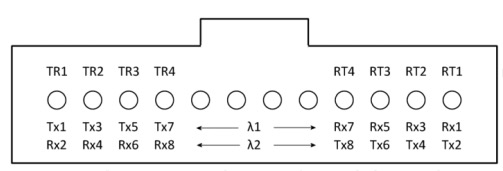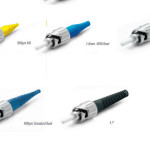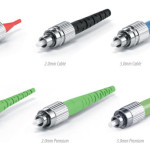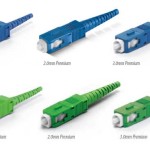The 400GBASE-SR4.2 (BiDi) Standard was announced by the 400G Bidirectional (BiDi) MSA (Multisource Agreement) Group in the year 2018. The specification will be named 400G-BD4.2, to identify the bidirectional use of four lasers each of two colors. Using the 400G-BD4.2 specification, two transceivers communicate over lengths up to 70 meters (OM3 MMF Multimode fiber), 100m (OM4 MMF) and 150m (OM5 MMF).
The 400G-BD4.2 modules comply with the requirements of the standard and have the following common features: eight optical transmitters and eight optical receivers in a bi-directional optical configuration (four of the transmitters using a wavelength range of 844nm to 863nm, λ1, and four of the transmitters using a wavelength range of 900nm to 918nm, λ2), a signal detect for each optical receiver and a twelve channel MPO fiber optic connector (only eight fibers total are required) using multimode optical fiber.
400G-BD4.2 Illustrative Power Budget
| Parameter | OM3 MMF | OM4 MMF | OM5 MMF |
| Effective Modal Bandwidth at 850nm (MHZ KM) | 2000 | 4700 | 4700 |
| Effective Modal Bandwidth at 918nm (MHZ KM) | 1210 | 1850 | 2890 |
| Power Budget (For max TDECQ) (dB) | 6.6 | 6.6 | 6.6 |
| Operating Distance (m) | 70 | 100 | 150 |
| Channel Insertion Loss (dB) | 1.8 | 1.9 | 2.0 |
| Allocation for Penalties (for max TDECQ) (dB) | 4.6 | 4.6 | 4.6 |
| Additional Insertion Loss Allowed (dB) | 0.2 | 0.1 | 0 |
- Per IEC 60793-2-10.
- Per draft IEC 60793-2-10 (subject to confirmation by TIA and IEC).
- The channel insertion loss is calculated using the maximum distance specified and the cabled optical fiber attenuation of 3.5 dB/km at 850 nm, plus an allocation of 1.5 dB for connection and splice loss (as given in IEEE P802.3cdTM/D3.4 Clause 138.10.2.2.1).
- Link penalties are used for link budget calculations. They are not requirements and are not meant to be tested.
400G-BD4.2 Lane Ordering for MPO Optical Connector

The MSA group is dedicated to defining optical interface specifications based on a dual wavelength BiDi transmission technology, which enables a reduction in the fiber count relative to other solutions.








